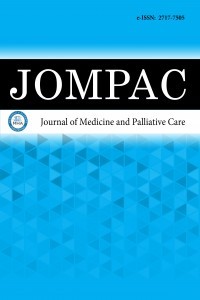1.
Roy-O’Reilly M, McCullough LD. Age and sex are critical factorsin ischemic stroke pathology. Endocrinology. 2018;159(8):3120-31.doi. 10.1210/en.2018-00465
2.
Deb P, Sharma S, Hassan KM. Pathophysiologic mechanismsof acute ischemic stroke: An overview with emphasis ontherapeutic significance beyond thrombolysis. Pathophysiology.2010;17(3):197-218. doi. 10.1016/j.pathophys.2009.12.001
3.
Potter TB, Tannous J, Vahidy FS. A contemporary review ofepidemiology, risk factors, etiology, and outcomes of prematurestroke. Curr Atheroscler Rep. 2022;24(12):939-948. doi.10.1007/s11883-022-01067-x
4.
Aydilek M, Yasar MF, Yaksi E. The effect of occupational therapy onupper extremity function and daily life activities in stroke patients.J PMR Sci. 2022;25(1):27-33. doi.10.31609/jpmrs.2021-83304
5.
Li N, Yang T, Yu P, et al. Bio-inspired upper limb soft exoskeletonto reduce stroke-induced complications. Bioinspir Biomim.2018;24(13):066001. doi. 10.1088/1748-3190/aad8d4
6.
Alsubiheen AM, Choi W, Yu W, Lee H. The effect of task-orientedactivities training on upper-limb function, daily activities, andquality of life in chronic stroke patients: a randomized controlledtrial. Int J Environ Res Public Health. 2022;19(21):14125. doi.10.3390/ijerph192114125
7.
Nijland RH, Van Wegen EE, Harmeling-van der Wel BC, KwakkelG. Presence of finger extension and shoulder abduction within 72hours after stroke predicts functional recovery: early prediction offunctional outcome after stroke: the EPOS cohort study. Stroke.2010;41(4):745-750. doi. 10.1161/STROKEAHA.109.572065
8.
Triccas LT, Kennedy N, Smith T, Pomeroy V. Predictors of upperlimb spasticity after stroke? A systematic review and meta-analysis. Physiotherapy. 2019;105(2):163-173. doi. 10.1016/j.physio.2019.01.004
9.
Lindgren A, Maguire J. Stroke recovery genetics. Stroke.2016;47(9):2427-2434. doi:10.1161/STROKEAHA.116.010648
10.
Wen X, Li L, Li X, et al. Therapeutic role of additional mirrortherapy on the recovery of upper extremity motor function afterstroke: a single-blind, randomized controlled trial. Neural Plast.2022; 2022: 8966920. doi. 10.1155/2022/8966920
11.
Wang Y, Li X, Sun C, Xu, R. Effectiveness of kinesiology tapingon the functions of upper limbs in patients with stroke: a meta-analysis of randomized trial. Neurological Sci. 2022; 43(7):4145-4156. doi. 10.1007/s10072-022-06010-1
12.
Yamakawa S, Nagayama H, Tomori K, Ikeda K, Niimi A.Effectiveness of active occupational therapy in patients with acutestroke: A propensity score-weighted retrospective study. FrontRehabil Sci. 2022;3:1045231. doi. 10.3389/fresc.2022.1045231
13.
Bennett S, Laver K, Clemson L. Progressing knowledge translationin occupational therapy. Aust Occup Therapy J. 2018;65(2):156-160.doi. 10.1111/1440-1630.12473
14.
Lindsay MP, Norrving B, Sacco RL, et al. World stroke organization(WSO): global stroke fact sheet 2019. Int J Stroke. 2019;14(8):806-817. doi. 10.1177/1747493019881353
15.
Santisteban L, Térémetz M, Bleton JP, Baron JC, Maier MA,Lindberg PG. Upper limb outcome measures used in strokerehabilitation studies: a systematic literature review. PLoS ONE.2016;11(5) :e0154792. doi. 10.1371/journal.pone.0154792
16.
Gosman-Hedstrom G, Svensson E. Parallel reliability of thefunctional independence measure and the Barthel index ADLIndex.Psychiatry. 2009;22(16):702-715. doi. 10.1080/0963828005019 1972
17.
Gladstone DJ, Danells CJ, Black SE. The Fugl-Meyer assessment ofmotor recovery after stroke: a critical review of its measurementproperties. Neurorehabil Neural Repair. 2002; 16(3):232-240. doi.10.1177/154596802401105171
18.
McDonnell M. Action research arm test. Aust J Physiother.2008;54(3):220-221. doi. 10.1016/S0004 - 9514(08)70034-5
19.
Avan A, Digaleh H, Di Napoli M, et al. Socioeconomic status andstroke incidence, prevalence, mortality, and worldwide burden: anecological analysis from the Global Burden of Disease Study 2017.BMC Medicine. 2019;17(1):1-30. doi. 10.1186/s12916-019-1397-3
20.
Yang C, Pan Y. Risk factors of dysphagia in patients with ischemicstroke: A meta-analysis and systematic review. Plos ONE.2022;17(6):0270096. doi. 10.1371/journal.pone.0270096
21.
Topçuoğlu MA. Türkiye’de inme epidemiyolojisi ve yakın gelecekprojeksiyonu: küresel hastalık yükü çalışması Türkiye verilerininanalizi. Turk J Neurol. 2022; 28: 200-211. doi. 10.4274/tnd. 2022.31384
22.
Adams H, Adams R, Del Zoppo G, Goldstein LB. Guidelines for theearly management of patients with ischemic stroke: 2005 guidelinesupdate a scientific statement from the Stroke Council of theAmerican Heart Association/American Stroke Association. Stroke.2005;36:916-923. doi. 10.1161 /01.STR.0000163257.66207.2d
23.
Rabadi MH, Galgano M, Lynch D, Akerman M, Lesser M, VolpeBT. A pilot study of activity-based therapy in the arm motorrecovery post stroke: a randomized controlled trial. Clin Rehabil.2008;22: 1071-82. doi. 10.1177/0269215508095358
24.
Almhdawi KA, Mathiowetz VG, White M, delMas RC. Efficacy ofoccupational therapy task-oriented approach in upper extremitypost-stroke rehabilitation. Occup Therapy Int. 2016;23(4): 444-456.doi. 10.1002/oti.1447
25.
Gilbertson L, Langhorne P, Walker A, Allen A, Allen A, MurrayGD. Domiciliary occupational therapy for patients with strokedischarged from hospital: randomised controlled trial. BMJ. 2000;320:603-606. doi. 10.1136/bmj.320.7235.603
26.
Narayan AK, Verma R, Garg RK, Sharma VP, Agarwal M,Aggarwal GG. Meaningful task-specific training (MTST) for strokerehabilitation: a randomized controlled trial. Top Stroke Rehabil.2012; 19(3):193-211. doi. 10.1310/tsr1903-193
27.
Ayna AB, Yıldırım MA, Önes K. Hemiplejik hastalarda iş uğraşıtedavisi etkinliği [Effectiveness of occupational theraphy inhemiplegic patients]. Pamukkale Tıp Derg. 2019;12:23-32. doi.10.31362/ patd.407800

